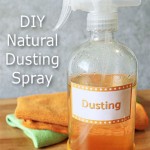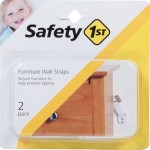How to Maintain Teak Furniture
Teak furniture is prized for its beauty, durability, and resistance to weather. Its natural oils protect it from the elements, making it a popular choice for outdoor settings. However, even the most resilient materials require regular maintenance to retain their aesthetic appeal and extend their lifespan. This article provides comprehensive guidance on maintaining teak furniture, covering cleaning, protection, and restorative techniques.
Regular Cleaning is Essential
Consistent cleaning is the cornerstone of teak furniture maintenance. It removes dirt, grime, and mildew that can accumulate on the surface, preventing staining and preserving the wood’s natural color. The frequency of cleaning depends on the environment. Furniture exposed to harsh weather conditions or heavy use will require more frequent attention than pieces sheltered indoors.
The recommended cleaning process involves a few simple steps. First, use a soft-bristled brush or broom to remove loose debris like leaves, dust, and cobwebs. Next, prepare a cleaning solution of mild dish soap and warm water. Avoid using strong detergents or abrasive cleaners, as these can damage the wood's surface and strip away its natural oils. Apply the soapy water to the furniture using a sponge or soft cloth. Scrub gently, paying particular attention to areas with stubborn stains or mildew growth. Thoroughly rinse the furniture with clean water to remove all traces of soap. Finally, allow the furniture to air dry completely before applying any protective treatments.
For stubborn stains, a specialized teak cleaner may be necessary. Always follow the manufacturer's instructions carefully when using such products. Test the cleaner on an inconspicuous area of the furniture first to ensure it does not cause discoloration or damage. Apply the cleaner evenly, scrub gently, and rinse thoroughly. Some teak cleaners are designed to brighten the wood and restore its natural golden hue, while others are formulated to remove specific types of stains, such as mold or mildew.
The use of pressure washers is generally discouraged for cleaning teak furniture. The high pressure can damage the wood fibers, leading to splintering and erosion. If a pressure washer is used, it should be set to a low pressure setting and the nozzle should be kept at a safe distance from the furniture's surface. Always test the pressure on an inconspicuous area first to assess its impact.
Bird droppings are acidic and can stain teak furniture if left unattended. Remove bird droppings promptly using a damp cloth and mild soap. If the stain persists, a specialized teak cleaner may be required. Similarly, spilled food and drinks should be cleaned immediately to prevent staining and discoloration.
Protecting Teak Furniture From the Elements
While teak is naturally resistant to weather, additional protection can significantly extend its lifespan and maintain its appearance. Several protective treatments are available, each offering different benefits and requiring varying levels of maintenance.
Teak sealers are designed to penetrate the wood and create a barrier against moisture, UV rays, and mildew. They help to prevent the teak from weathering to a silver-gray color and preserve its natural golden hue. Sealers typically need to be reapplied every one to two years, depending on the environment and the specific product used. Before applying a sealer, the furniture must be thoroughly cleaned and allowed to dry completely. Apply the sealer evenly using a brush or cloth, following the manufacturer's instructions. Avoid applying sealer in direct sunlight or during humid conditions, as this can affect its absorption and drying time.
Teak oils are another popular option for protecting teak furniture. They replenish the wood's natural oils, helping to prevent it from drying out and cracking. Teak oils also enhance the wood's natural color and provide a protective sheen. However, teak oils do not offer the same level of protection against moisture and UV rays as sealers. They typically need to be reapplied more frequently, every few months or as needed, depending on the environment. Applying teak oil is similar to applying a sealer: clean the furniture thoroughly, allow it to dry completely, and apply the oil evenly using a brush or cloth. Wipe off any excess oil after a few minutes to prevent a sticky residue.
Covers are a simple and effective way to protect teak furniture from the elements when it is not in use. Covers shield the furniture from rain, sun, and debris, reducing the need for frequent cleaning and maintenance. Choose covers made from breathable materials to prevent moisture buildup, which can lead to mildew growth. Ensure the covers fit snugly but allow for adequate ventilation. Regularly remove the covers to air out the furniture and prevent the growth of mold or mildew.
Storing teak furniture indoors during harsh weather conditions is the best way to protect it. Garages, sheds, or basements provide a safe and dry environment that prevents damage from extreme temperatures, rain, snow, and UV rays. Before storing the furniture, clean it thoroughly and allow it to dry completely. Cover the furniture with breathable cloths or sheets to protect it from dust and scratches. Avoid using plastic covers, as they can trap moisture and lead to mildew growth.
Restoring Weathered Teak Furniture
Over time, even with regular maintenance, teak furniture may weather and develop a silver-gray patina. This is a natural process that does not affect the wood's structural integrity. However, some owners prefer to restore the teak to its original golden hue. Several methods can be used to restore weathered teak furniture, depending on the level of discoloration and the desired outcome.
Sanding is an effective method for removing the weathered surface layer of teak and revealing the fresh wood underneath. Use a fine-grit sandpaper (120-180 grit) for light weathering and a medium-grit sandpaper (80-100 grit) for heavier weathering. Sand in the direction of the wood grain to avoid scratching or damaging the surface. Start with the coarser grit sandpaper and gradually move to the finer grit sandpaper for a smoother finish. After sanding, clean the furniture thoroughly to remove all sanding dust. Apply a teak sealer or oil to protect the newly exposed wood.
Teak cleaners designed for restoration are formulated to remove the weathered surface and restore the wood's natural color. These cleaners typically contain a combination of detergents, brightening agents, and mild abrasives. Follow the manufacturer's instructions carefully when using such products. Test the cleaner on an inconspicuous area of the furniture first to ensure it does not cause discoloration or damage. Apply the cleaner evenly, scrub gently, and rinse thoroughly. Some teak cleaners require a two-step process, with a cleaner followed by a brightener. After cleaning, apply a teak sealer or oil to protect the restored wood.
For heavily weathered teak furniture, a combination of sanding and cleaning may be necessary. Start by sanding the furniture to remove the bulk of the weathered surface. Then, use a teak cleaner to remove any remaining discoloration and brighten the wood. Clean thoroughly and allow the furniture to dry completely before applying a protective treatment.
Replacing damaged or broken hardware can significantly improve the appearance and functionality of teak furniture. Inspect the furniture regularly for loose screws, cracked hinges, or broken slats. Replace any damaged hardware with new, high-quality replacements. Stainless steel hardware is recommended for outdoor use, as it is resistant to rust and corrosion. Tighten any loose screws or bolts to ensure the furniture is stable and secure.
Repairing cracks and splits in teak furniture can prevent further damage and extend its lifespan. Small cracks can be filled with a wood filler specifically designed for outdoor use. Clean the area around the crack thoroughly and apply the wood filler according to the manufacturer's instructions. Allow the filler to dry completely and then sand it smooth. For larger cracks or splits, a more substantial repair may be required, such as gluing and clamping the wood back together. Consult with a professional furniture repair specialist for complex repairs.
By implementing these maintenance practices, owners can ensure that their teak furniture remains beautiful and functional for many years to come. Regular cleaning, proper protection, and timely restoration are key to preserving the natural beauty and durability of this valuable material.

How To Clean Teak Furniture Youtube

Restore Outdoor Teak Table No Sanding Cleaning Oiling Youtube

How To Take Care Of Teak Furniture And Maintenance

Mitchell S Interiors How To Clean Outdoor Teak Furniture

Teak Wood Uses Benefits Why It S Great For Furniture

How To Maintain The Outdoor Teak Furniture Indonesia Garden Manufacturer

How To Take Care Of Teak Furniture And Maintenance

How To Clean And Restore Teak Furniture Or Deck Without Sanding Staining

Cleaning Premium Teak Furniture A Guide

How To Maintain Teak Furniture
Related Posts







